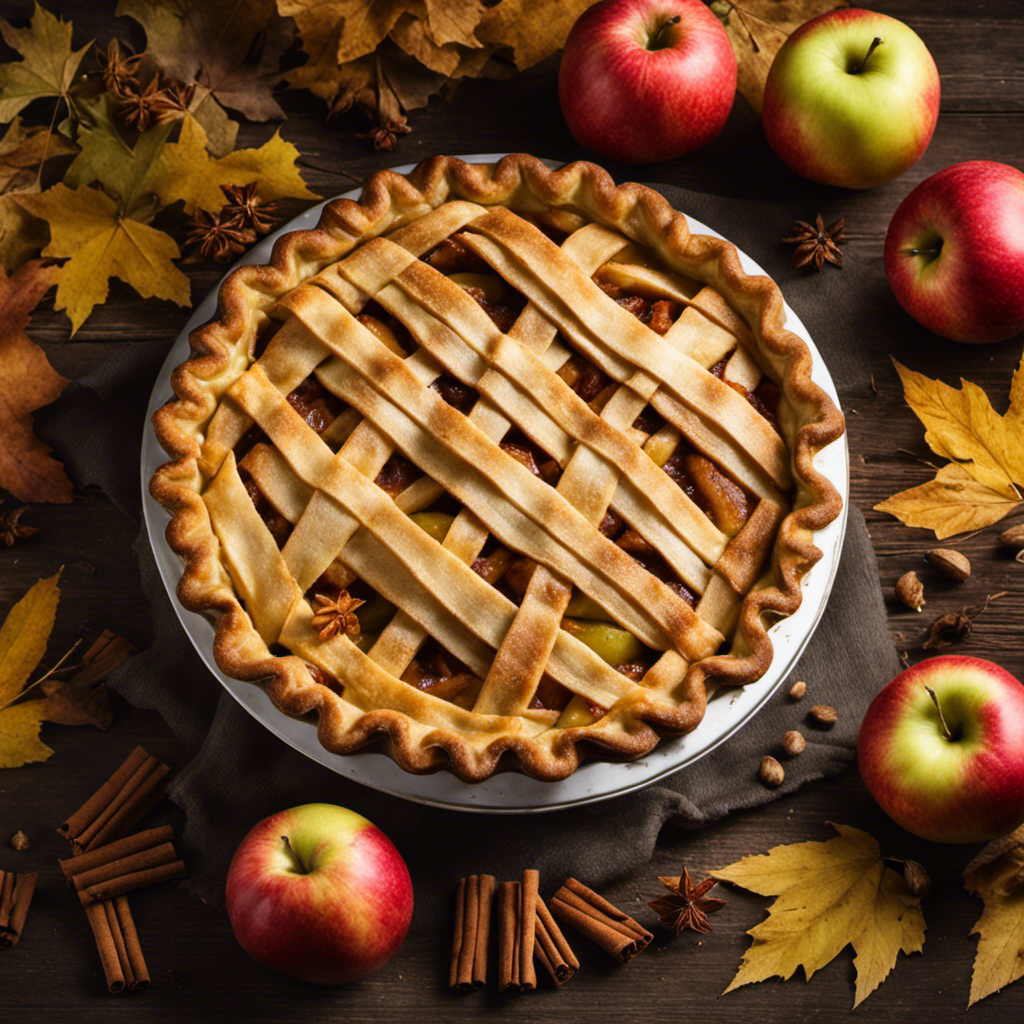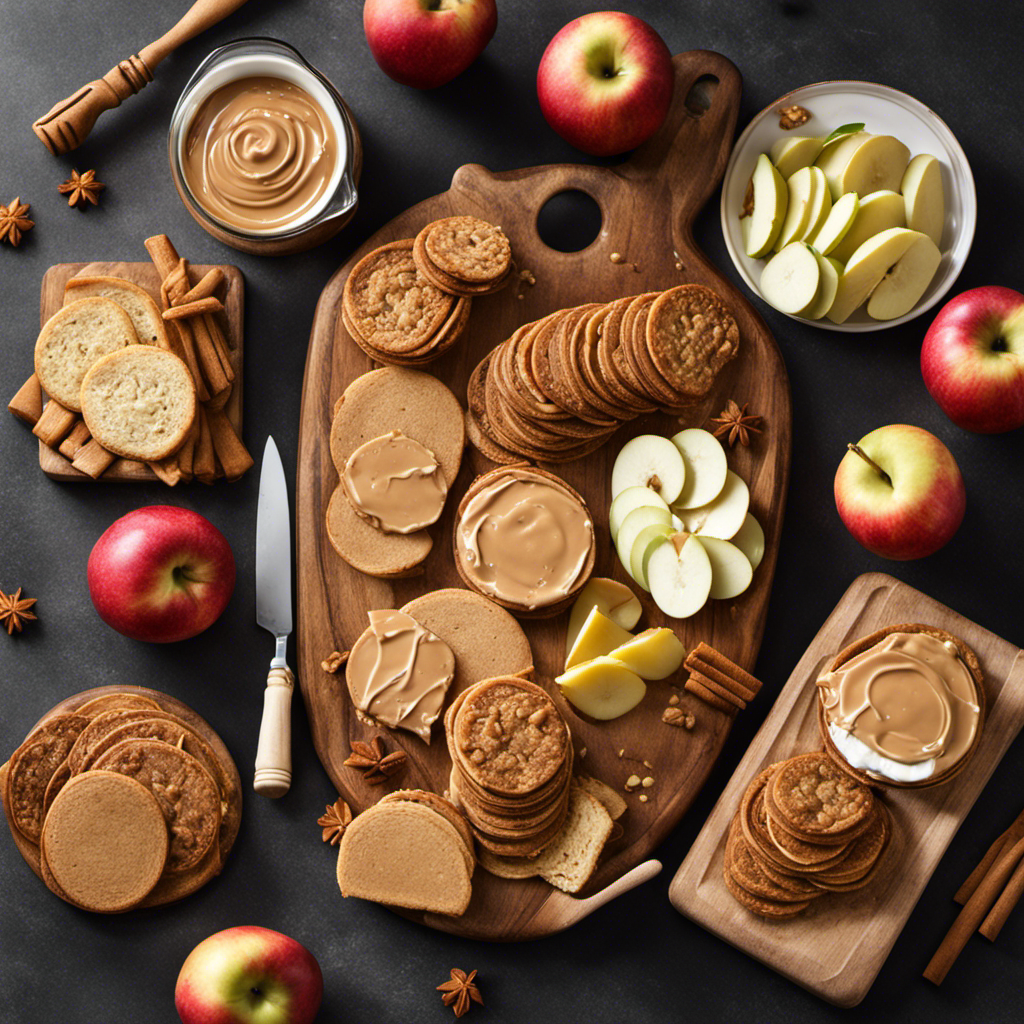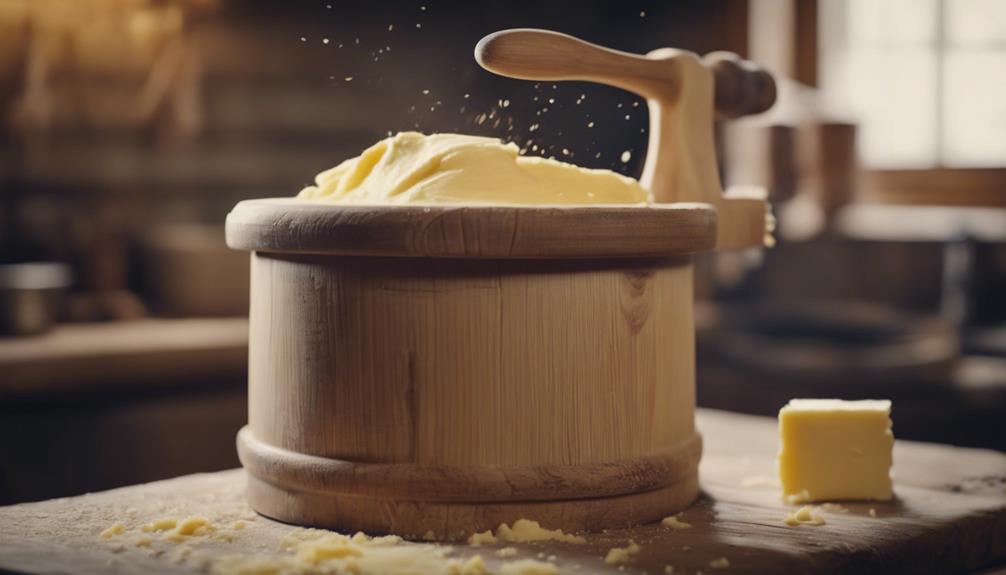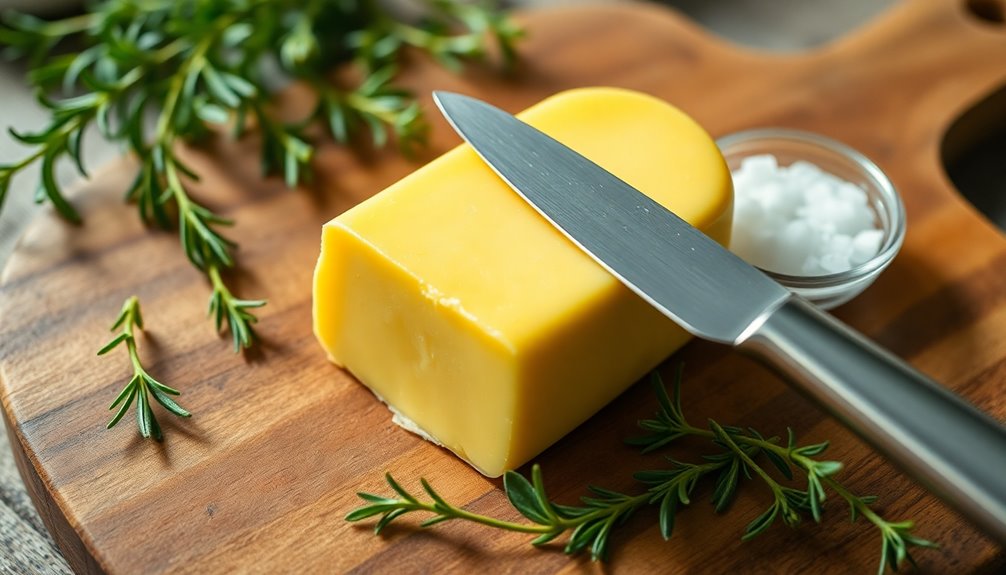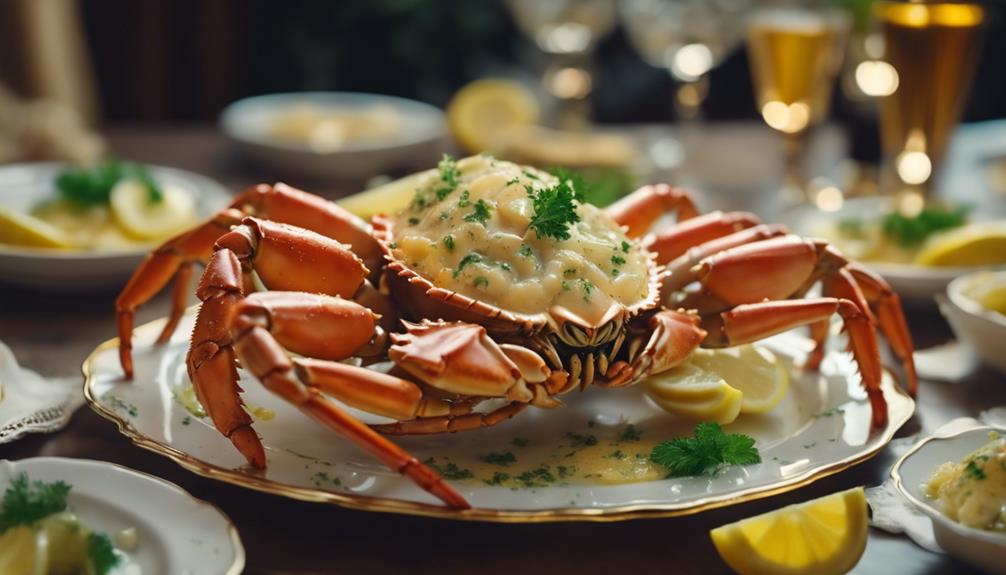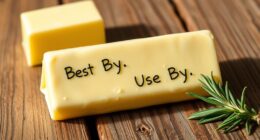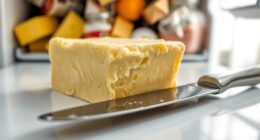Did you know that there are countless delicious dishes that can be made using cannabis-infused butter? Whether you’re in the mood for something sweet or savory, the possibilities are endless.
In this article, I’ll be sharing some creative and mouthwatering ideas for making the most of your stash. Whether you’re looking for a refreshing drink, a comforting classic, or some baked goodies, I’ve got you covered.
So let’s dive in and explore the wonderful world of cannabis-infused cuisine together.
Key Takeaways
- Weed butter can be used to make a variety of delicious cannabis-infused desserts, such as weed brownies.
- Cannabis-infused oils and butter can be incorporated into savory dishes, like pasta dishes and soups, for added flavor.
- Infused cocktails, mocktails, and smoothies offer a refreshing way to enjoy the benefits of cannabis.
- Weed butter can elevate comfort food classics, like mac and cheese and grilled cheese sandwiches, to a whole new level.
Sweet Treats
You can make delicious brownies with weed butter! Cannabis confections are a delightful way to indulge in the benefits of marijuana.
When it comes to decadent desserts, weed brownies are a classic choice. The rich and fudgy texture of the brownie pairs perfectly with the earthy and herbal flavors of the weed butter.
Making weed brownies is a simple process that involves infusing regular butter with cannabis and then incorporating it into the brownie batter. The result is a heavenly treat that not only satisfies your sweet tooth but also provides a relaxing and euphoric experience.
Just remember to dose your brownies carefully, as the effects of cannabis can be potent. So, the next time you’re craving something sweet, why not whip up a batch of these delightful cannabis-infused brownies?
Savory Delights
When it comes to cannabis-infused dishes, there’s more to explore beyond just sweet treats. Let’s dive into the world of savory delights, where we can discover a variety of infused main course options and savory side dishes.
From flavorful cannabis-infused meats to delectable side dishes enhanced with cannabis-infused oils or butters, there are endless possibilities to elevate your dining experience with a touch of cannabis.
Infused Main Course Options
Looking to enjoy a delicious infused main course? Try adding some weed butter to your favorite pasta dishes or roasted vegetables for a flavorful twist. Infused pasta dishes are a great way to elevate your culinary experience.
The rich, nutty flavor of the weed butter complements the pasta perfectly, creating a unique and satisfying dish. Simply melt the weed butter in a pan and toss it with cooked pasta, adding some grated Parmesan cheese and fresh herbs for extra flavor.
Another option is to use cannabis infused soups as the base for your main course. Infusing soups with weed butter adds a subtle earthy taste that pairs well with a variety of ingredients. Whether you choose to make a creamy mushroom soup or a hearty vegetable stew, the infusion of weed butter will take your main course to the next level.
Get creative and experiment with different flavors and ingredients to create your own unique infused main courses.
Savory Side Dishes
Adding cannabis-infused oil to roasted vegetables or mashed potatoes can add a unique and flavorful twist to your savory side dishes. The infusion of cannabis brings a subtle and earthy taste that complements the natural flavors of the vegetables.
Here are four creative ways to incorporate cannabis-infused oil into your side dishes:
-
Infused Dips: Whip up a batch of cannabis-infused hummus or creamy cannabis-infused ranch dip. Serve it alongside a platter of fresh vegetables or warm pita bread for a delightful appetizer or snack.
-
Cannabis-Infused Breads: Instead of using regular butter or oil, try spreading cannabis-infused butter on your bread before toasting it. The rich flavors of the cannabis will enhance the taste of your favorite bread varieties.
-
Roasted Potatoes: Toss your potatoes in cannabis-infused oil before roasting them in the oven. The oil will coat the potatoes, resulting in a crispy exterior and a deliciously infused flavor.
-
Cannabis-Infused Mashed Potatoes: Add a drizzle of cannabis-infused oil to your mashed potatoes for an extra kick of flavor. The cannabis infusion will elevate your mashed potatoes to a whole new level.
Now that we’ve explored some enticing savory side dishes, let’s move on to the next section: refreshing drinks.
Refreshing Drinks
When it comes to summertime, there’s nothing quite like sipping on a refreshing infused cocktail or mocktail. Whether you’re looking to unwind with a cannabis-infused mojito or enjoy a CBD-infused lemonade by the pool, there are plenty of options to choose from.
In this discussion, I’ll be sharing some delicious and creative recipes for infused summer cocktails and cannabis mocktails that will elevate your beverage game and add a touch of relaxation to your summer gatherings.
Infused Summer Cocktails
To create delicious infused summer cocktails, simply mix your homemade weed butter with your favorite spirits and fresh fruit juices. Here are four creative and refreshing recipes to try:
-
Campfire Margarita: In a shaker, combine tequila, lime juice, orange liqueur, and a spoonful of weed butter. Shake well and strain into a glass filled with ice. Garnish with a charred lime wedge for that smoky campfire flavor.
-
Frozen Weed Daiquiri: Blend rum, lime juice, simple syrup, and a dollop of weed butter with ice until smooth. Pour into a chilled glass and garnish with a lime wheel. Perfect for cooling off on hot summer days.
-
Weed Mojito Slushie: Muddle mint leaves, lime juice, and simple syrup in a glass. Add rum, weed butter, and crushed ice. Stir well and enjoy the icy, refreshing goodness.
-
Cannabis Piña Colada: Blend pineapple juice, coconut cream, rum, and weed butter with ice until frothy. Pour into a tall glass and garnish with a pineapple wedge. Sip and savor the tropical paradise.
These infused summer cocktails are the perfect way to enjoy the warm weather while indulging in your favorite frozen treats. Cheers!
Cannabis Mocktail Recipes
After exploring the world of infused summer cocktails, it’s time to dive into the refreshing realm of cannabis mocktails. These alcohol-free concoctions are perfect for those looking to enjoy the benefits of cannabis in a more relaxed and mellow way. One popular option is cannabis infused smoothies, which blend the goodness of fruits and vegetables with the calming effects of cannabis. Another delightful choice is herbal cannabis teas, which infuse soothing herbs with the therapeutic properties of cannabis. To give you a taste of what’s possible, here are some tantalizing cannabis mocktail recipes:
| Mocktail Name | Ingredients |
|---|---|
| Green Dream | Spinach, pineapple, coconut milk, cannabis oil |
| Tranquil Hibiscus | Hibiscus tea, lemon juice, agave syrup, cannabis |
| Zen Cooler | Cucumber, mint, lime juice, sparkling water, cannabis tincture |
These mocktails not only offer a refreshing way to consume cannabis, but they also provide a unique and enjoyable experience. So, grab your blender or teapot and get ready to sip on some cannabis-infused bliss.
Comfort Food Classics
Craving some comfort food classics? You can’t go wrong with a warm and gooey mac and cheese made with weed butter. This cannabis-infused twist on a timeless dish is sure to satisfy your cravings and elevate your dining experience.
Here are four other classic comfort food recipes that can be enhanced with the addition of weed butter:
-
Cannabis-Infused Grilled Cheese Sandwich: Take your grilled cheese to the next level by spreading weed butter on the bread before grilling it to golden perfection. The creamy cannabis-infused butter will add a subtle kick to this nostalgic favorite.
-
Cannabis-Infused Mashed Potatoes: Upgrade your mashed potatoes by mixing in some weed butter. The earthy flavor of cannabis blends perfectly with the creamy texture of mashed potatoes, creating a delightful and comforting side dish.
-
Cannabis-Infused Tomato Soup: Pair your grilled cheese sandwich with a bowl of cannabis-infused tomato soup. The rich and tangy flavors of the soup combined with the cannabis-infused butter will create a warm and soothing meal.
-
Cannabis-Infused Brownies: For dessert, indulge in classic brownies infused with cannabis. The rich chocolatey flavor of the brownies complements the herbal notes of the weed butter, resulting in a decadent treat that will leave you feeling blissful and satisfied.
These cannabis-infused comfort food classics are not only delicious but also offer a unique and enjoyable way to incorporate weed butter into your cooking. So go ahead and elevate your next meal with these delectable creations.
Baked Goodies
Looking for a sweet treat? Try baking some cannabis-infused goodies for a delightful and elevated dessert experience. Edible recipes have come a long way, and cannabis-infused desserts are no exception. From classic chocolate chip cookies to decadent brownies, the possibilities are endless when it comes to creating cannabis-infused baked goods.
The key is using high-quality weed butter to infuse your desserts with the perfect amount of cannabis goodness. By following simple recipes and incorporating cannabis-infused butter, you can create delectable treats that not only satisfy your sweet tooth but also deliver a pleasant and relaxing high.
Creative Cannabis Cuisine
After exploring the world of baked goodies infused with cannabis, let’s dive deeper into the realm of creative cannabis cuisine. When it comes to edible creations, there are endless possibilities to explore. Here are four cooking techniques that can elevate your cannabis-infused dishes to a whole new level:
-
Infused oils and dressings: By incorporating weed butter into your favorite oils or dressings, you can add a subtle yet delightful cannabis flavor to your salads or sautés.
-
Savory sauces and spreads: From creamy cannabis-infused hollandaise to tangy marijuana-infused barbecue sauce, the options are limitless. These sauces and spreads can be used to enhance the flavor of your favorite dishes.
-
Cannabis cocktails: Infusing your favorite spirits with weed butter can create unique and potent cocktails. From cannabis-infused margaritas to THC-infused martinis, these drinks will take your happy hour to a whole new level.
-
Cannabis-infused candies: Explore the world of homemade gummies, caramels, and chocolates, all infused with the goodness of weed butter. These tantalizing treats are perfect for satisfying your sweet tooth while enjoying the benefits of cannabis.
With these cooking techniques, you can create a variety of delicious and inventive cannabis-infused dishes that will impress even the most discerning palate. Let your imagination run wild and explore the endless possibilities of creative cannabis cuisine.
Frequently Asked Questions
How Do I Make Weed Butter?
To make weed butter, I start by infusing oils with THC extracted from cannabis. There are different methods for extracting THC, but once you have the infused butter, the possibilities for what to make are endless!
What Is the Recommended Dosage for Weed Butter in Recipes?
The recommended dosage for weed butter in recipes is subjective and depends on personal tolerance. Experimenting with small amounts is key. There are many delicious ways to use weed butter in cooking, from brownies to pasta sauces.
Can I Substitute Regular Butter With Weed Butter in Any Recipe?
Yes, you can substitute regular butter with weed butter in any recipe. However, it’s important to consider the dosage and the flavor profile it will add. It works well in baked goods and can enhance the taste of savory dishes.
How Long Does the Effect of Weed Butter Last?
The long term effects of weed butter can vary depending on the strain used. Some strains may have a longer-lasting effect, while others may be more short-lived. It’s important to consider this when using weed butter in recipes.
Are There Any Potential Side Effects of Consuming Weed Butter?
There are potential health risks associated with consuming weed butter, including short-term effects like impaired coordination and memory, and potential long-term effects on brain development. It’s important to use responsibly and be aware of the potential risks.
Conclusion
In conclusion, there are countless possibilities when it comes to what you can make with weed butter. From sweet treats like brownies and cookies to savory delights like pasta and pizza, the options are truly endless. You can even create refreshing drinks and comfort food classics infused with the goodness of cannabis.
Just remember to use weed butter responsibly and in moderation. And here’s an interesting statistic for you: did you know that over 50% of people who use weed butter prefer to incorporate it into baked goodies? Imagine the aroma of freshly baked marijuana-infused bread or muffins filling your kitchen. It’s a culinary experience like no other!
So go ahead and get creative in the kitchen with weed butter, and enjoy the unique flavors it brings to your dishes.
